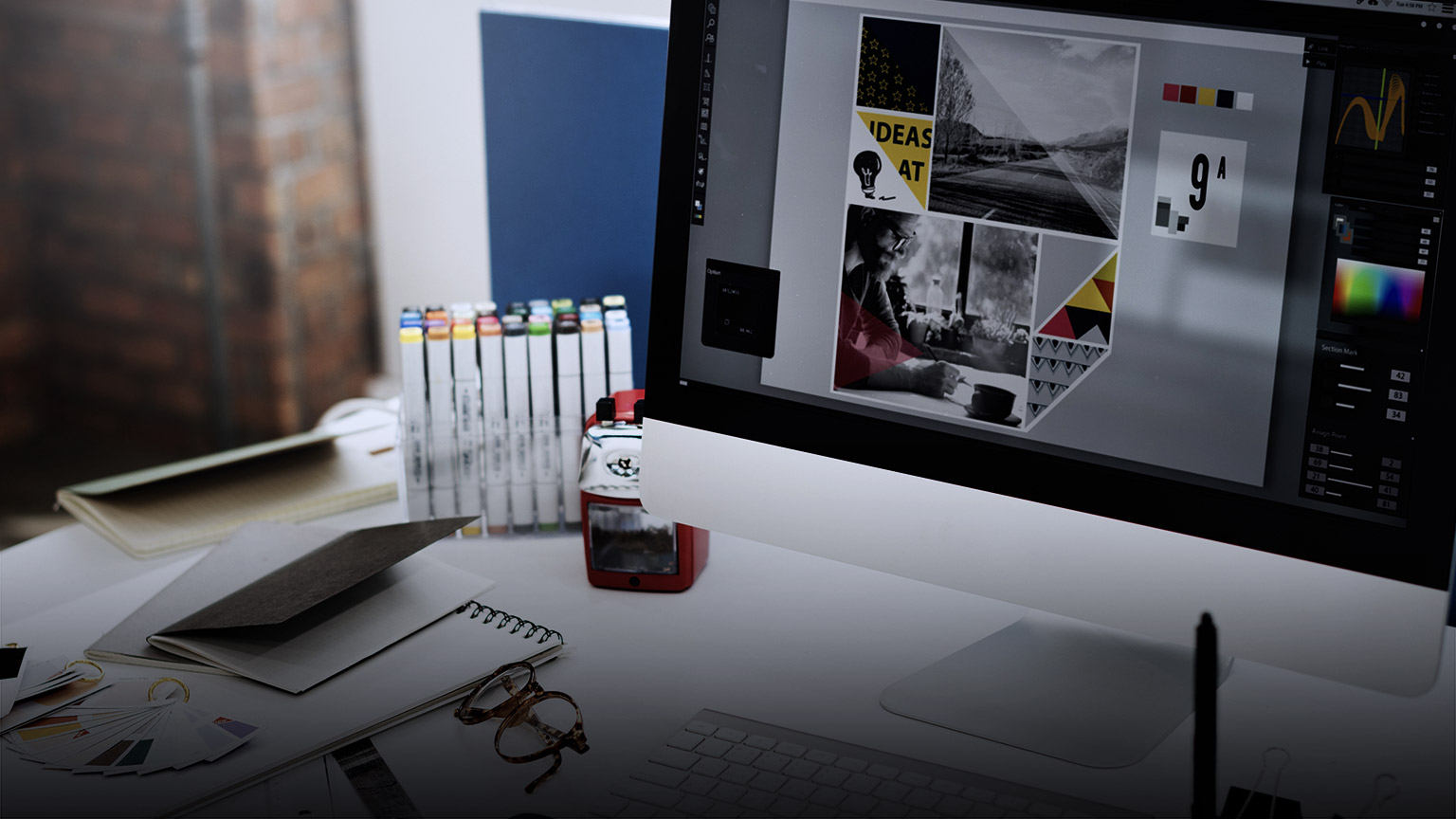Welcome to topic 4 – Research and Evaluate Trends. The purpose of this topic is to allow you to analyse trends and research and evaluate the effect of current and emerging trends on your graphic design practice.
You will be introduced to the following topics:
- Research information on graphic design trends
- Using formal and informal research strategies
- Assessing industry trends in graphic design, and
- Evaluating connections between graphic design and other professions and industries.
Graphic Designers that stay up to date with graphic design trends have an advantage over designers that stick to what they have learned. By knowing what is trending in the design industry, you can incorporate innovative ideas for client’s needs instead of relying on the basics. Staying current on the newest graphic technologies and trends is important. Design helps us understand our world, and trends place us in time. Design trends from conflicting eras and opposing ends of the visual spectrum are all vying for attention. Whether you’re a designer or working with a design agency, all you need to understand is that you need to stay on top of the latest graphic design trends. Consumers don’t come in asking “what’s that you have in latest and say I want that!” Clients approach in for solutions to their marketing communications needs and issues.
Good design has existed throughout time, but it still undergoes major changes and shifts from time to time. Changes in technology, the shift to mobile and other factors influence how design works and is implemented. Good design has adapted to the current state of technology and will continue to over time. If all designers had followed existing trends, we would not have experienced the same leaps and advances in design that we have. It’s thanks to the designers who thought outside the box and created new technologies and practices that design has made the progress it has.
Trends in Design
Trends exist for a reason, and people are always going to hop on board with what is popular. That means that it’s important to understand trends and why they exist, but to also be able to be playful and skirt around them. Google is a great example of a brand that adapts to new trends but also stays forward-thinking and constantly challenges the status quo.
Good design should, at the end of the day, be honest and have a long-lasting appeal. This mean transcending the immediacy of current trends while still employing the important elements that they bring to the design world.
For instance, consider a simple trend such as the two horizontal bars for the Pause function on video players. That icon started as a trend and remained steady over time. If you were to replace it with a circle or an octagon, users would be confused, and it wouldn’t be a very functional or effective design choice.
But what is a trend? It is usually defined as something new or popular. It’s an idea or style that becomes more common in society over time. What makes a trend is when it starts to become widespread. If everyone is talking about a certain thing, it’s probably going to be a good one. But there are some other factors to take into consideration.
The first is how long a trend lasts. A trend may start slowly but quickly grow in popularity. Or it could fade away after a few months. The second factor is the number of people using it. If a small group of people only uses a trend, it might not last very long. However, if it gets adopted by many types of businesses, it will likely continue to evolve. Lastly, you need to know what kind of effect it has on your business. Is it helping or hurting your company? You need to make sure that whatever you choose to use is right for your brand. There is a proliferation of trends and are dependent on which specific source you access. There are many sources of information you can utilise.
Graphic design is subject to the evolving intellectual and aesthetic trends that influence the work of designers and reflect the attitudes of society at large. For example, the design responds to the changing themes that govern how we view the world; this is evident in movements such as Modernism, Postmodernism and Deconstructivism. These trends help shape the development and evolution of graphic design as a creative discipline, opening new doors of creative possibility and providing new tools to meet design challenges.
Research sources
Whatever industry trends you research, there are a variety of sources that can be used in this process. These can include:
Books
Books can improve creativity and foster knowledge about a specific topic or theory, such as graphic design or an area of graphic design. Gaining knowledge through practice, by repeating a set or sets of actions to improve the outcome of reading over time. There is a need to be open to new learning and knowledge. eBooks can be accessed from any location and downloaded into your own personal library.
Create specific online libraries containing e-books, chapters, and information to assist with thematic and subject research. Use existing bibliographies in online publications to assist in further study in a particular area. Schedule time to read and set yourself goals. Choose a location that is conducive to reading. Take notes from specific books and use virtual bibliographies to create thematic libraries for easy access in the future.
Journals
Peer reviewed journal research is used to find new information and as such are very important. They can promote the transfer of knowledge between professionals in academia and industry by emphasising research in which results are of interest or applicable to design practices. This gives the user a wider range of information to work with and perform a comprehensive research from academic journals.
Begin by reading the abstract, which will inform you what the article is about and be able to easy evaluate its usefulness to your topic. Then the conclusion which will also determine the resourcefulness of any journal. Most academic journals are behind a paywall, however each academic institution will have access to journals which can then be downloaded as PDFs and kept in your personal online space.
Websites
The Internet is very convenient because an individual can easily perform research work at home with great comfort and convenience. The Internet is a valuable search tool and has been informative for research, as it significantly helps improve research skills, and makes learning visual and easy to follow. The Internet creates an economical avenue for the dissemination of information and articles.
There are six (6) criteria that should be used in evaluating any website. These are authority, accuracy, objectivity, currency, coverage and appearance. For each criterion, there are several questions to be asked. The more questions you can answer "yes", the more likely the Web site is one of quality. Obviously, the more issues with the website in terms of the criteria above, should be avoided.
Graphic Design Companies
Visiting or contacting key graphic design companies allows for individuals to absorb knowledge and inspiration from experienced designers and other specialists. The experience of live communication with graphic design agencies cannot be replicated, and as such is an invaluable process. Subscribing to their websites and other contact details ensure that the graphic design company is easily reached and contact maintained.
Subscribe to industry newsletters about graphic design companies latest work, commissions and key personnel that you can contact. Once you realise that you are not alone, your life as a creative will become a good deal more bearable and you will become more confident in contacting graphic design companies.
When you network with other creatives, especially those in your field of expertise, you have a community of practice.
Graphic Designers
Networking with other graphic designers expands your experience and contacts. Talking and listening to others in the industry is important and assists in the understanding of the industry and a designer’s place within it. While networking is helpful it is advantageous in creative fields like graphic design, not only for meeting new clients but also for building a roster of peers who can be turned to for support or collaboration.
You are never too young or old to have a mentor, and it is very important to speak to someone who has experience in your industry who can help guide you through obstacles and offer advice. Take advantage of the creative energy around you and stay connected to your peers. You may get recommended for a job that someone else isn’t able to take. Be proactive in maintaining relationships to further your knowledge of graphic design.
Databases
A research database is where the user would find journal, magazine, and newspaper articles and both primary and secondary sources. Each database contains thousands of articles published in many different journals, allowing the user to find relevant articles faster than by searching individual journals. They contain highly organised information that allows the user to find information with high relevance to search terms.
Use keywords instead of full sentences or questions to allow for focused searches associated with graphic design. Combine concepts and use multiple search boxes and use quotes around phrases to assist in your research efforts. If you want to read an article on graphic design, then you need to look for a button that says ‘Full Text’ or something similar. If it is not available, then look for a suitable alternative.
Magazines, blogs, and mood boards
There are many publications for and about the design industry. Many design magazines have blogs with content not printed in the physical edition, and some specialist blogs only make their content available online. These are not only useful for viewing the work of other designers but for keeping abreast with movements, trends, and technologies within the industry in general.
Magazines and blogs are essential sources of inspiration for designers, keeping them abreast of current trends and contemporary debates. Many titles will have both digital and print-based counterparts. Considering graphic designers can spend a long time staring at computer screens, printed magazine titles such as Creative Review allow readers to escape from their digital devices and immerse themselves in a long read about specific topics.
If you want to see the latest design work, find out who created it, what the challenges were, and how they overcame them, there is a blog for that. Here are some examples of blogs that will expand your knowledge of other designers and their work, which can help you to contextualise your ideas against professionals in their field.
Abduzeedo – a collective of individual writers sharing articles about architecture, design, photography and UX.
Design Week - Founded in 1986, Design Week was the UK’s leading design magazine until 2011, when it became online-only. It continues to bring you high-quality, well-written news and inspiration across graphics, branding, interiors, digital, product, furniture and more.
Creative Boom - celebrates, inspires and supports the creative community and has an excellent section on graphic design to give you loads of inspiration.
Design Clever - is a collaboration started by Jonathan Ring and Bethany Baker, two aspiring graphic designers with a passion for everything design-related. This blog was created to showcase talented designers worldwide, and they encourage creatives everywhere to submit their work to it.
Fonts in Use - is a public archive of typography indexed by typeface, format, and industry. An independent project led by Sam Berlow, Stephen Coles, and Nick Sherman, it documents and examines graphic design intending to improve typographic literacy and appreciation.
Mindsparkle - magazine promotes the “most beautiful and inspiring projects” in the fields of graphic design, web design and video.
AIGA: Eye on Design - AIGA, otherwise known as The Professional Association for Design, has a beautiful blog called Eye on Design which is bursting with design inspiration. With contributors from around the world, you’ll never be bored with its varied content.
Design Taxi - with its own section dedicated to graphic design, Design Taxi is a good shout to keep abreast of industry news, trends, and updates. Its posts don’t go into a lot of depth but cover a wide breadth of topics. So, it’s great for getting an overview of what’s going on in general.
Mood boards

The generation of mood boards associated with a particular theme, collection or trend are an important element in the graphic design process. Mood boards serve many purposes, starting with organising a project’s inspiration. They’re a valuable resource to help keep the style and aesthetic of a project consistent with a client’s goals and expectations. They’re also an excellent way to refine a project’s style before diving into the actual design process.
Mood boards are physical or digital collages that arrange images, materials, text, and other design elements into a format that's representative of the final design's style. Mood boards can be used for creating brand designs, product designs, and pretty much any other type of design project.
Visuals can often speak louder and clearer than words making mood boards extremely useful for establishing the aesthetics of a project. Many different factors can be explored including:
- Colour palettes
- Typography
- Photography style
- Iconography
- Textures
Taking these into account, a visual picture can be developed of the specific style or feeling. We live in a digital world and, as a result, there are realms of inspiration and ideas at our fingertips. A good place to start is looking at other websites to get you thinking in the right space. Of course, nothing should be copied, but using examples that are already live is a great way of sparking conversation and considerations. Lifestyle inspiration platforms such as Pinterest, Instagram and industry-leading platforms can also be used to generate ideas. However, don’t forget there is still a world beyond digital. Harness real-world inspiration seen from other outlets including magazines, posters or out-of-home advertisements.
Visuals excite more than words. They bring ideas to life and show a clear path of how a project is evolving. In turn, mood boards can be an effective way of developing your brand identity considering how concepts can be translated online. If you don’t have a full set of brand guidelines, mood boarding is the ideal opportunity to consider them.
This mood board below, forms the inspiration for the fragrance, Chloe by Research Studios and includes photographic ideas and found artefacts that are designed to generate ideas for an actual space.
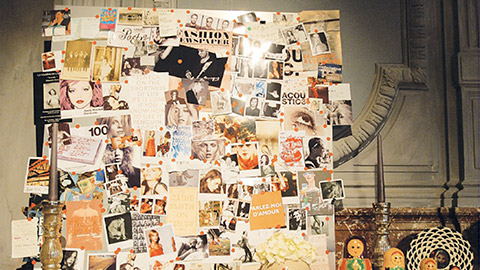
Image: Ambrose, G. & Harris, P. The Fundamentals of Graphic Design, Bloomsbury, London, p.4
This space below was created by Research Studios for the launch of the fragrance Chloé in Paris and is an example of how graphic design continues to change – here, the result is the creation of a space rather than a print piece, website, or app. It acts as a piece of environmental design and translates the values of a product into a piece that engages the audience.
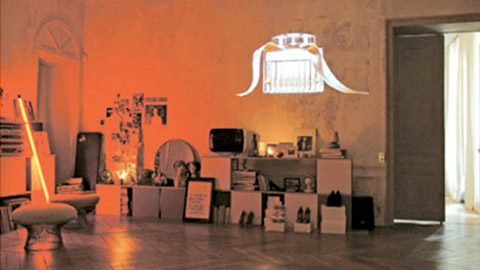
Image: Ambrose, G. & Harris, P. The Fundamentals of Graphic Design, Bloomsbury, London, p.4
Another example of a graphic design company translating their ideas into a three-dimensional space is this example. Dazzle, at V&A Creative Studios for the London Design Festival, takes its inspiration from disorientating black-and-white camouflage painted on Allied ships in the First World War. It was designed by Pentagram partner Domenic Lippa in collaboration with the 14–18 NOW arts programme to commemorate the 100th anniversary of the end of World War I. Abstracting a war poem by Wilfrid Wilson Gibson, Lippa’s distorted typographic forms and stark geometric shapes result in an immersive experience that deliberately tries to confuse visitors and instil a sense of how war disorientates the human condition.21
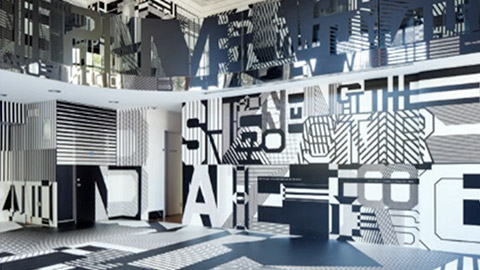
Image: Ambrose, G. & Harris, P. The Fundamentals of Graphic Design, Bloomsbury, London, p.7
Technology in Design
Technological development has placed designers at the heart of the creative process. Often, a graphic designer manages the design process and coordinates the work undertaken by other creative disciplines as part of a job. As such, the scope of a designer’s responsibilities now includes print buying, website programming, photography, page layout, materials selection, art direction, freehand illustration, computer-generated illustration (CGI), project management, client account management, storyboarding, editing and pre-press production.
Designers may work with, and choose from, a varied selection of sources to conceive the final design – whether employing a philosophical viewpoint, such as modernism, or relying on pure aesthetics of current trends in typeface design or fashion, for example. Graphic design is an ever-evolving field, with new technologies and approaches constantly emerging. With the rise of digital media, more people are consuming information online. This means graphic designers must start thinking about designing for digital platforms instead of just print. There will be a move away from traditional print media consequently.
Virtual Reality (VR) is already starting to change the way designers create visuals and experiences for clients. With VR, designers can create fully immersive environments that allow their clients to experience their designs in a completely new way. Augmented Reality (AR) is another emerging technology that is starting to change how designers work. With AR, designers can overlay digital content onto the real world, which gives them a whole new canvas to work with. Finally, 3D printing is becoming more and more popular, and it’s starting to change the way graphic designers create visuals.22
There are other ways that emerging design technology is impacting on the specialisation of graphic design, these are.
Computer Graphics Technology
It is a field of technology used to create images for computer screens, TVs, web pages, and mobile devices. It integrates the study of visual communication and applied technology, which is constantly evolving. Technologies in applied computer graphics (such as the Adobe CC) are consistently reviewed to provide current, innovative, and relevant design solutions.
Technological development has placed designers at the heart of the creative process. Often, a graphic designer manages the design process and coordinates the work undertaken by other creative disciplines as part of a job. Tasks get completed quicker and the impact on business is that more work gets produced and potentially more clients can be facilitated.
Cloud Computing Technology
Cloud computing delivers shared computing resources and applications over the internet. A cloud can be private or public.
Cloud computing is ideal for software developers who no longer need to worry about infrastructure and technical support and can concentrate on other things. It offers faster innovation, flexible resources, and economies of scale. This is a way to deliver a broad range of applications and business solutions to individuals and organisations of any size. The setting up of cloud computing technology can be an expensive outlay. A community cloud, which is shared by several organisations, supports a particular community that shares the same concerns could be a more cost-effective option for businesses.
Human Computer Interaction Design Technology (HCI)
Human-computer interaction (HCI) design uses software and hardware to design computer systems and software people use efficiently. HCI is a subset of human-centred design, which applies human factors (or user-centred design) principles to the design of computer systems. HCI is a core design discipline and requires a thorough understanding of human factors.
The biggest benefit as a company that comes from using HCI is from more user-friendly products. You can make computers and systems much more receptive to the needs of the user, creating a better user experience. Virtual reality is a perfect example of HCI at work. As the computer and user interact, it is supposed to give the user a different perspective.
Internet of Things (IoT)
The Internet of Things (IoT) is a set of interrelated things or “things” that are connected to the internet. They are intelligent and collect, exchange, and analyse data using the cloud. IoT is the next stage of the information age, and internet-connected devices are on the rise. The physical world meets the digital world, and they work together and cooperate.
A business can use the network of physical objects— “things”—that are embedded with sensors, software, and other technologies for the purpose of connecting and exchanging data with other devices and systems over the internet. The possibility for business is endless. Low-cost computing, the cloud, big data, analytics, and mobile technologies are all attractive to businesses.
User Experience Design (UX)
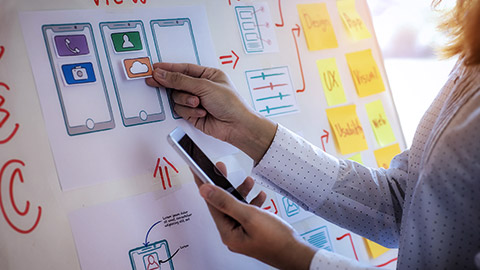
User experience design (UXD) ensures that a product or service is easy to use and provides a positive user experience. UX design considers each and every element that shapes this experience, how it makes the user feel, and how easy it is for the user to accomplish their desired tasks.
User experience design is vital to the success of a product or service in a designated business. UX design helps eliminate costly problems early on. Spotting potential usability issues at the beginning of a project is far cheaper than fixing them later in the process and has obvious benefits for a business.
Wearable Technology
Wearable technology is a category of devices worn on the body that can send and receive data from the cloud. They include smartwatches, fitness trackers, earbuds, and more. Wearables are becoming more popular and will continue to evolve as a means for people to stay connected to their lives.
Working too much kills productivity, and wearable technology monitors this and provides data which addresses this. Business involved in wearable technology benefit from streamlined business operations and can improve a company’s productivity. They can monitor how employee’s bodies react to different conditions and determine whether or not the wearer might need to do something differently. Wearable devices have revolutionised the ability to collect and track health data on a much larger scale.
Multidisciplinary Collaboration
Multidisciplinary designers understand how diverse areas of expertise can come together to solve complex design problems. Collaboration is key to effective working relationships that are best placed to produce a range of design thinking and solutions. Comprehension of how other disciplines work, and their rules leads to understanding the problem, applying insight from past solutions, and planning a path forward. Designers are learning about other areas of design and can help the other person with their workload and vice versa.
There are many ways of looking at a problem and approaching it from alternative angles. By bringing different perspectives and experiences to the table, designers can generate better solutions with a better understanding. Sharing new or different programs and platforms is beneficial to multidisciplinary work practices. Research practice can be achieved collaboratively.
Designers all approach problem-solving differently, in experiences and disciplines. Approaching a problem alone only gives one perspective, which can lead to narrow design solutions. When designers from other disciplines know about every aspect of design, they become better creatives, influenced by background, experience, design practice and approaches to their discipline.
Michel Chanaud is editor-in-chief of Etapes magazine, a French publication on graphic design and visual culture. He is also president of Pyramyd, a company that offers seminars and workshops for professionals in publishing, advertising, graphic, and communication. They offer workshops and seminars to “form” designers and creative types—to help them keep up with the latest trends and software upgrades.
Graphic design is an ever-evolving field, with new technologies and approaches constantly emerging. With the rise of digital media, more people are consuming information online. This means graphic designers must start thinking about designing for digital platforms instead of just print. There will be a move away from traditional print media therefore. But what are the latest industry trends in graphic design, and how do you ensure that your knowledge of such is relevant? Are you aware of any interesting trends in your field?
A current trend is to use monochromatic colour schemes in multimedia design. That means using a single colour plus tints and shades of that same colour. This creates unity in a design and can be very powerful when mixed with one accent colour. And colours with black added can impart drama to a website. But never place black on pure white, as this is very stressful on the eyes and will cause viewers to exit your project. Soften the contrast between the text, visuals, and background to solve this problem.
‘It’s Nice That’ has online articles on emerging talent and developing trends.23
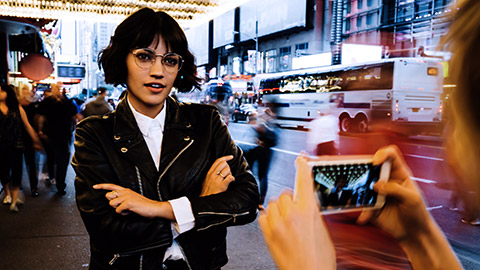
One of the new trends in job hunting is using online sites such as YouTube, Facebook, and LinkedIn to promote yourself with a video résumé. A video résumé certainly allows you to distinguish yourself from everyone else. If you can chat comfortably and be articulate in front of a camera, you increase your job possibilities. The ability to inject humour will show you in a way that a paper résumé can never do. Not everyone, however, is enthusiastic about video résumés, although some employers feel that they are one way to weed out those unsuitable for the job. Before you start the process of creating the video, make sure that you will be successful in doing a trial video, and have your friends or co-workers critique you.
Here is what you need to get started.
- Wear a professional outfit just as if you were going on a live interview
- Look around your house and find a solid background, such as an off-white wall
- Create good lighting that will show you at your very best
- Do not forget to use a stable tripod to keep the camera steady
- Position yourself so that you’re centred in the camera’s view screen from the waist up
- Practice your presentation until you can talk without fumbling your words
- Introduce yourself
- Smile and make eye contact with the camera
- Do not fidget or look down at notes
- Thank the viewer for his or her time
- Keep the video short - one to three minutes is more than enough
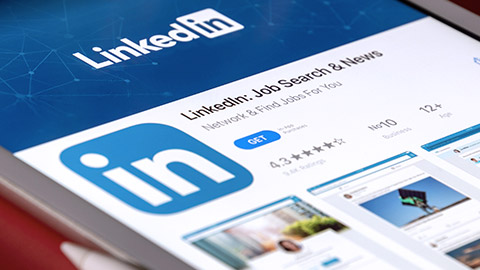
LinkedIn is the clear leader for connecting with B2B prospects, potential hires, and business partners. Even so, LinkedIn can be intimidating. New users need to ask not only whom they should connect with, but whom they shouldn’t connect with. At the same time, that hesitation can slow your progress toward building new connections and expanding your professional network.
You would think out of 756 million users, it wouldn’t be difficult to connect with 500+ people and become a super connector. But after you’ve exhausted your own contacts list, it can be tough to know if you’re using the most effective methods of reaching out.
Consider the following seven (7) recommendations in helping you to grow your network and optimise success.
Personalise your connection requests
It is important to understand how to connect with someone on LinkedIn in a way that puts them at ease. When scrolling through LinkedIn’s list of “people you may know,” don’t simply click the “connect” button and fire off a generic request. If you are interested in connecting with someone you don’t know, such as a person who works in a similar role at another company, add relevance by letting them know why you are messaging them.
Follow up on in-person networking opportunities
Building your network can (and does) still happen when you meet and interact with people face to face. As we navigate back toward a world of doing at least some business in person, opportunities to connect with people are on the rise once again. Be sure to make the most of them. It is easy to overlook connections you meet every day, so reach out. You may be surprised at what you learn about them in the context of LinkedIn.
Explore LinkedIn Groups
You can select groups that reflect communities within your target audiences, both to demonstrate your knowledge and to learn more about prospects and customers. Watch this video on how to grow your network on LinkedIn Groups.
Invite engagement by posting often
When a connection likes, shares, or comments on your status update, their connections are more likely to see your original post in their feed. If your content seems relevant, those “2nd-degree” connections may take the step to reach out and send an invitation to connect with you. Posting more often creates additional opportunities for engagement, thus syndicating your content across home page feeds everywhere. Don’t be too concerned about annoying people by posting every day.
Grab attention with visual content
Adding images to your social posts increases engagements with people in your existing network, and boosts exposure to potential connections. So, mix it up. Don’t always just share links; include visuals.
Engage with existing connections
Engaging with current connections puts your profile directly in front of their networks, and all it takes is a “like” or comment on their posts. Commenting with your personal insights or questions can increase engagement and exposure even more. And engagement adds depth and meaning, helping transform connections into relationships.
Promote your LinkedIn profile URL
Social media platforms such as Twitter and Instagram typically give you space for a bio. Use those bio spaces as a LinkedIn connection-driving machine by encouraging contacts there to find you and connect on LinkedIn, too — especially if you have a significant following on the other platform. Don’t be afraid to promote your LinkedIn profile by posting the link in a status update, tweet, pin, video, photo, etc. This is another great way to take advantage of your presence on other social platforms.
